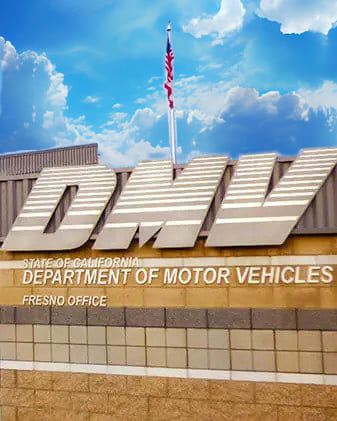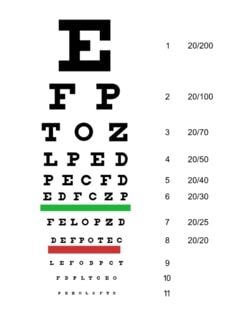DMV Eye Test | How beat the eye test at the DMV?
Driving is also a safety obligation for both you and others on the road. The Department of Motor Vehicles understands this fact and requires all drivers to take DMV eye test as part of the application procedure for a driver’s license. Here are important tips and tricks for how beat the eye test at the DMV?
While the term ‘beating’ may look trickery, therefore we’re focusing on legitimate ways to pass eye test at DMV easily.
What is DMV Eye Test?
The DMV eye test is a visual examination administered during the process for getting or renewing a driver’s license. The basic task of DMV eye test is to assess a person’s visual acuity and peripheral vision in order to guarantee that they meet the basic visual standards for safe driving.
How Beat the Eye Test at the DMV

DMV Eye Test Chart
The number of different charts used in the DMV eye test can vary depending on the specific jurisdiction, testing facility, and technology available. However, a common chart that is widely used in the DMV eye test is the Snellen chart.
The Snellen chart is used to assess visual sharpness and clarity of one’s eyesight. This classic eye chart is with rows of letters that decrease in size as you move down the chart.
A vision exam, including the DMV eye test, is normally performed at a distance of roughly 20 feet (6.1 meters).
The Snellen eye chart, which is often used for vision testing, is supposed to be viewed from 20 feet away. The top of the chart is labeled “20/20,” which shows normal visual acuity as being able to read letters from 20 feet away.

Individuals are normally required to stand or sit about twenty feet away from the eye chart during the DMV eye test. They are then asked to read the characters or letters on the chart. The letter size has been set so that legibility from 20 feet provides an assessment of the individual’s visual acuity.
How bad can your vision be to pass DMV eye test?
The minimum vision standards for driving in the United States vary by state. The minimum vision requirements to get a standard, non-commercial driver’s license in California are:
- At least 20/40 vision in one eye
- At least 20/70 vision in second eye
- At least 20/40 vision or better when both eyes are evaluated together
Similarly, the minimum vision requirement to get a standard, non-commercial driver’s license in Texas and New York is 20/70 in the better eye. In Texas, however, with 20/70 vision you may be restricted to drive at speeds of 45 miles per hour or less during the day.
What happens if you fail eye test at DMV?
The DMV will arrange for you to take a Supplemental Driving Performance Evaluation (SDPE) (driving test) to see if you are eligible for compensation for your vision issue. You must wear your glasses or corrective contact lenses if your vision specialist advises them. After that if you pass the driving test, the DMV will issue or renew your driver license and add (or keep) a corrective lens limitation.
The Big Picture is General Eye Health
Passing the DMV eye test is only the beginning. Regular eye care will promote your general eyes health in addition to beat the eye test at the DMV. Following the test, continue to schedule eye exams and adjust your eyeglasses as needed based on changing prescriptions. Good eye health guarantees that you are always ready for safe driving.
This question appeared in the following DMV Tests.

